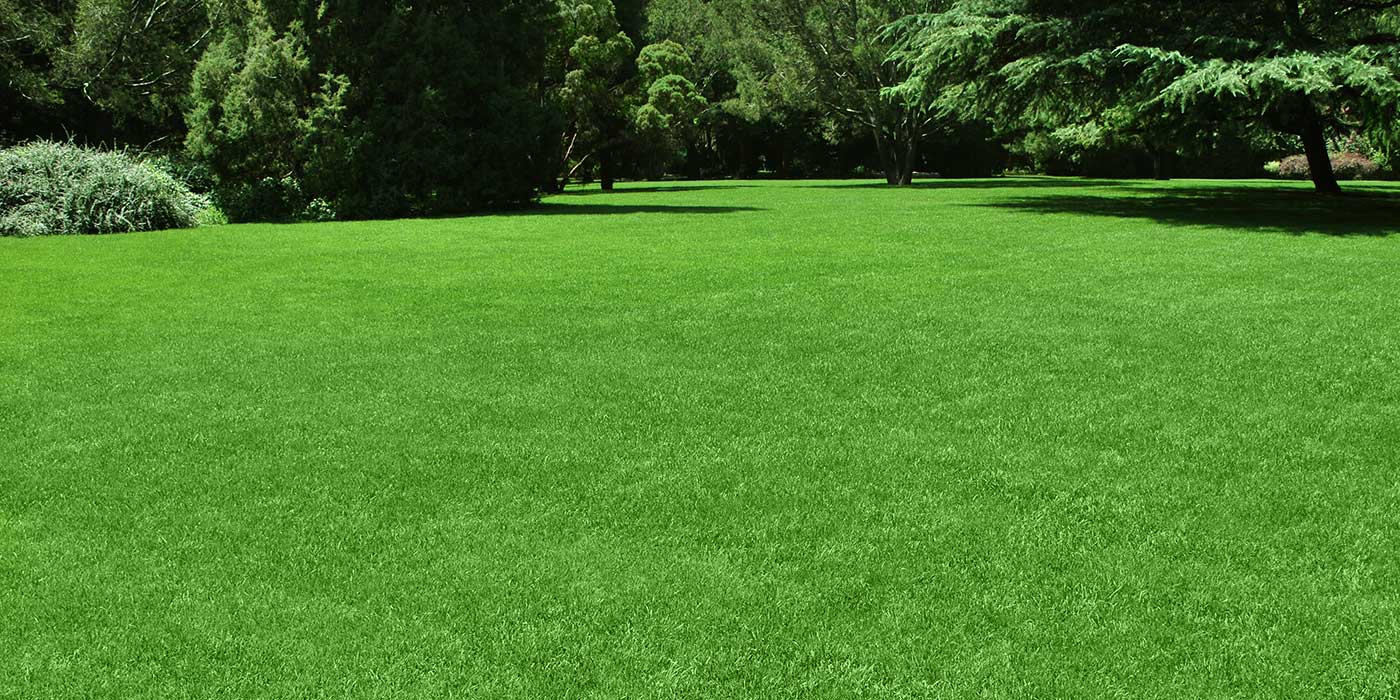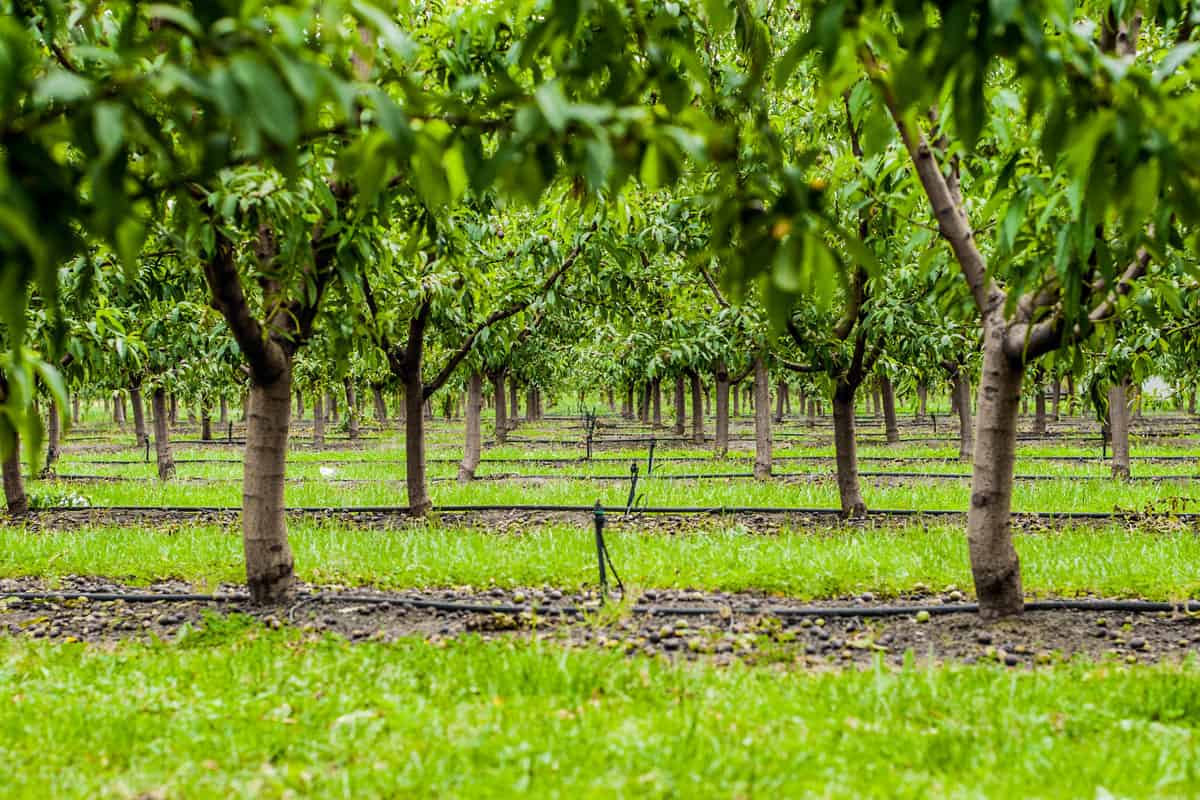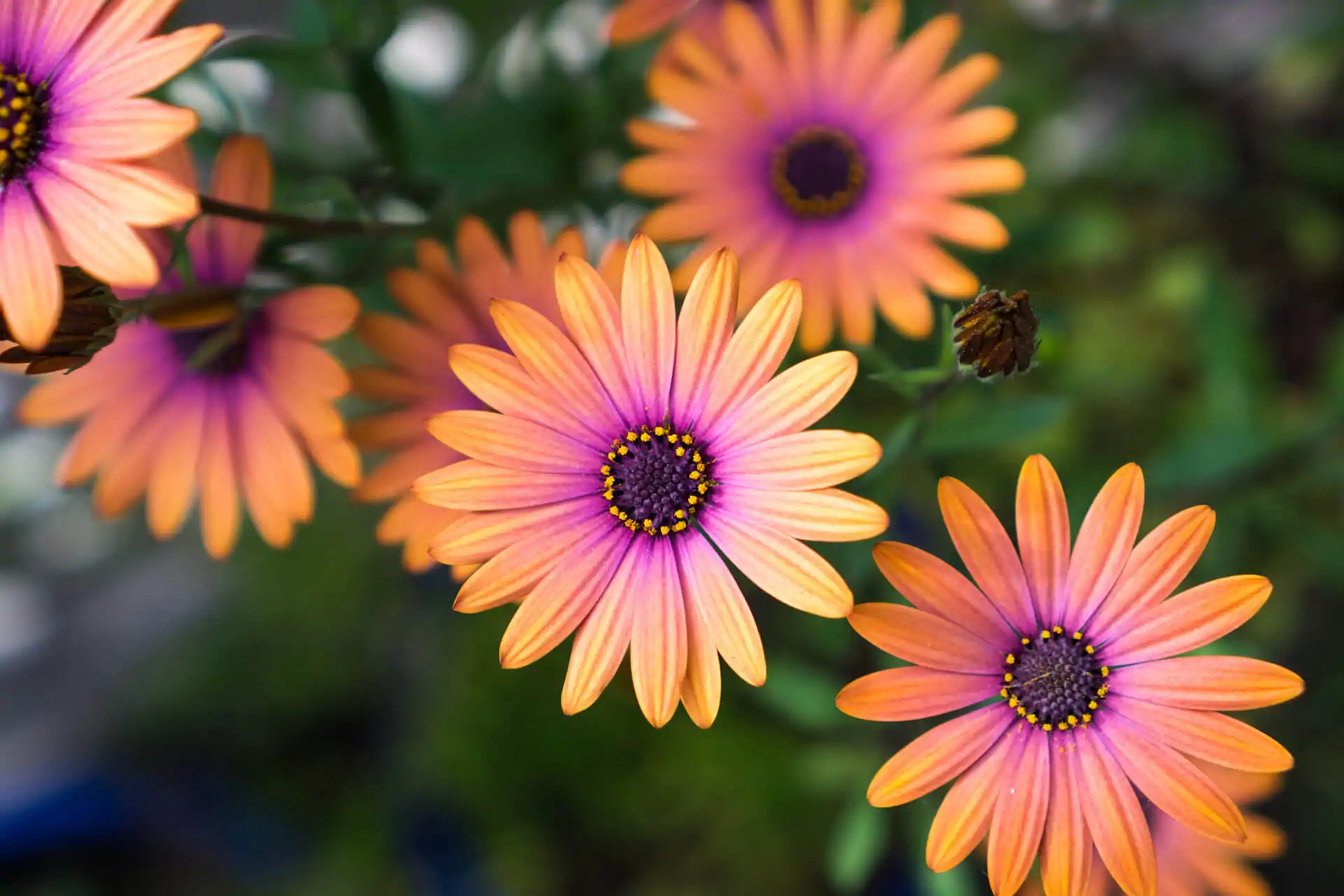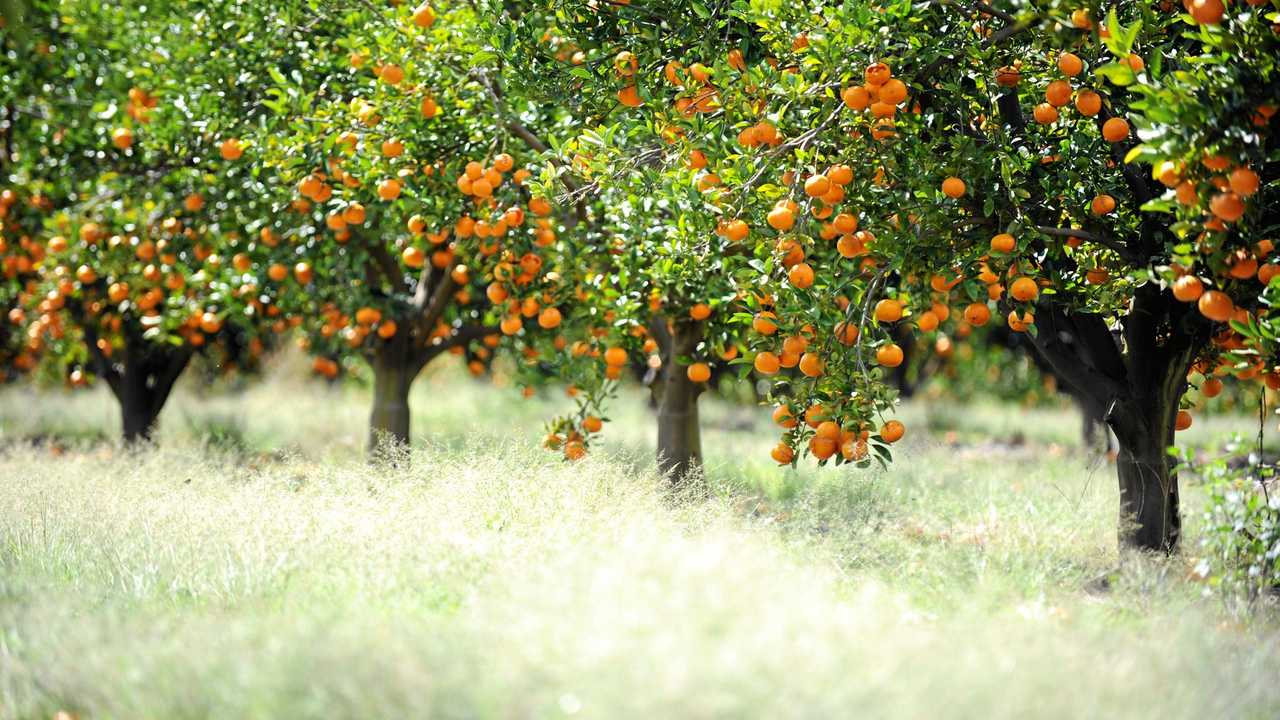Home>Gardening Techniques>Plant Care>When To Fertilize Perennials


Plant Care
When To Fertilize Perennials
Modified: January 22, 2024
Discover the best time to fertilize perennials with our comprehensive guide on plant care. Ensure your perennials thrive with the right fertilizer schedule.
(Many of the links in this article redirect to a specific reviewed product. Your purchase of these products through affiliate links helps to generate commission for Chicagolandgardening.com, at no extra cost. Learn more)
Table of Contents
Introduction
Perennials are a popular choice for gardeners looking to add beauty and color to their outdoor spaces. These plants, which return year after year, require care and maintenance to thrive. One crucial aspect of nurturing perennials is providing them with the proper nutrients through fertilization.
Fertilizing perennials is essential for their growth, development, and overall health. It can help them produce abundant flowers and foliage, increase resistance to diseases and pests, and promote longevity. However, understanding the right time to fertilize and choosing the appropriate fertilizer can be overwhelming for many gardeners.
In this article, we will dive deep into the world of perennial care and explore the best practices for fertilizing these beautiful plants. Whether you are a novice gardener or have been tending to perennials for years, this guide will provide you with the knowledge and tips you need to ensure your plants thrive.
We will discuss the signs of nutrient deficiency in perennials, the importance of choosing the right fertilizer, and general guidelines for fertilization. Additionally, we will provide specific recommendations for fertilizing in different seasons: spring, summer, and fall.
By the end of this article, you will have a comprehensive understanding of when and how to fertilize your perennials, empowering you to create a lush and vibrant garden that will be the envy of all who see it.
Understanding Perennials
Before diving into the details of fertilization, it is important to have a fundamental understanding of perennials. Perennials are herbaceous plants that live for more than two years and typically grow from their rootstock each year. Unlike annuals that complete their life cycle in one growing season, perennials persist from year to year, often becoming larger and more robust over time.
Perennials come in a wide variety of shapes, sizes, and colors, making them a popular choice for both beginner and experienced gardeners. Some common examples of perennials include roses, lilies, daisies, lavender, and hostas. They can be used as borders, groundcovers, focal points, or mixed in with other plants to create stunning landscapes.
One of the advantages of growing perennials is that they are generally low-maintenance compared to other types of plants. However, they still require proper care to reach their full potential. This includes regular watering, proper sunlight exposure, pruning, and, of course, fertilization.
When it comes to fertilization, it is essential to understand the specific nutrient needs of perennials. Different plants have different requirements, and it is crucial to provide them with the right balance of nutrients to ensure optimal growth and health.
Perennials generally require a mix of macronutrients and micronutrients. Macronutrients, such as nitrogen (N), phosphorus (P), and potassium (K), are needed in larger quantities and play a vital role in plant growth, root development, and overall vigor. Micronutrients, including iron (Fe), manganese (Mn), and zinc (Zn), are needed in smaller amounts but are equally crucial for various metabolic processes within the plant.
Understanding the specific nutritional requirements of your perennials will help you select the right fertilizers and ensure you are providing your plants with the necessary elements for their optimal growth. In the next section, we will explore the importance of fertilizing perennials and the signs of nutrient deficiency to watch out for.
The Importance of Fertilizing
Fertilizing perennials is a crucial aspect of their care and maintenance. While these plants can survive without regular fertilization, providing them with the right nutrients will significantly enhance their growth, health, and overall appearance.
One of the primary benefits of fertilizing perennials is that it allows them to reach their full potential in terms of size and vigor. Properly fertilized plants tend to have stronger root systems, which in turn improves their ability to absorb water and nutrients from the soil. This translates into healthier plants that are more resistant to stressors such as drought, disease, and pests.
Fertilizers also play a vital role in promoting abundant flowering and foliage production. Perennials that lack essential nutrients may produce fewer flowers or have stunted growth. By providing them with the right balance of macronutrients and micronutrients, you can help stimulate flower development, increase the number of blooms, and enhance the overall aesthetic appeal of your garden.
Another important aspect of fertilization is replenishing the soil’s nutrient content. Over time, the nutrients in the soil can become depleted due to the plant’s nutrient uptake or leaching caused by heavy rainfall. By adding fertilizers, you restore the nutrient balance and ensure that your perennials have a steady supply of the vital elements they need for their growth and survival.
Furthermore, fertilizing perennials can help to correct nutrient deficiencies. Certain signs and symptoms, such as yellowing leaves, stunted growth, or poor flowering, may indicate a lack of specific nutrients in the soil. By identifying and addressing these deficiencies through targeted fertilization, you can provide your plants with the necessary nutritional boost and help them thrive.
It is important to note that different perennials have varying fertilization needs. Some plants may require more frequent fertilization, while others may thrive with less frequent applications. Additionally, factors such as soil type, climate, and plant age can also influence the fertilization requirements. Therefore, it is crucial to understand the specific needs of your perennials and tailor your fertilization practices accordingly.
Now that we understand the importance of fertilizing perennials, let’s move on to the signs of nutrient deficiency that you should look out for in your plants.
Signs of Nutrient Deficiency
Recognizing the signs of nutrient deficiency in your perennials is crucial for maintaining their health and vitality. When plants lack essential nutrients, they may exhibit specific symptoms that indicate a deficiency.
One common sign of nutrient deficiency is yellowing of leaves, also known as chlorosis. Different nutrient deficiencies can cause distinct patterns of yellowing. For example, a nitrogen deficiency often results in overall pale yellowing of older leaves, while an iron deficiency may cause yellowing between the veins of young leaves.
Another symptom to watch out for is stunted growth. If your perennials are not receiving enough nutrients, they may experience slow or limited growth compared to healthy plants. This can be especially evident in young plants that are not developing as quickly as they should.
Poor flowering or failure to flower altogether can also indicate a nutrient deficiency. Insufficient nutrients, particularly phosphorus, can negatively impact flower production. If your perennials are not producing the expected number of blooms or the flowers are small and underdeveloped, it may be a sign that they require additional fertilization.
Leaf discoloration and wilting can also occur in plants suffering from nutrient deficiencies. For example, a potassium deficiency may cause leaf scorching and browning at the edges. On the other hand, a magnesium deficiency can cause leaf tips to curl and become brittle.
In addition to these visible signs, it is important to pay attention to other factors such as plant vigor and overall health. Nutrient-deficient perennials may appear weak, have reduced resistance to diseases and pests, and show signs of general decline.
It is important to note that nutrient deficiencies can sometimes be challenging to diagnose accurately, as different nutrient deficiencies can cause similar symptoms. Conducting a soil test can help identify specific nutrient imbalances and guide your fertilization efforts.
Now that we have discussed the signs of nutrient deficiency in perennials, the next step is to understand how to choose the right fertilizer to address these deficiencies.
Choosing the Right Fertilizer
Choosing the right fertilizer is essential for providing your perennials with the nutrients they need to thrive. With so many options available, selecting the best fertilizer can be overwhelming. Here are some factors to consider when choosing the right fertilizer for your perennials:
- Nutrient ratios: Fertilizers are typically labeled with three numbers, representing the ratios of nitrogen (N), phosphorus (P), and potassium (K) they contain. For perennials, a balanced fertilizer with equal or slightly higher amounts of nitrogen and potassium is often a good choice. However, it is important to consider the specific nutritional needs of your plants, as some perennials may require different ratios for optimal growth.
- Slow-release vs. quick-release: Fertilizers can be classified as either slow-release or quick-release. Slow-release fertilizers gradually release nutrients over an extended period, providing a steady supply to your perennials. Quick-release fertilizers, on the other hand, provide an immediate burst of nutrients but may require more frequent applications. Consider the longevity and convenience of the fertilizers based on your gardening preferences and the specific requirements of your perennials.
- Organic vs. synthetic: Fertilizers can be either organic or synthetic. Organic fertilizers are derived from natural sources, such as compost, manure, or bone meal. They release nutrients slowly and improve soil structure over time. Synthetic fertilizers, on the other hand, are chemically formulated and provide nutrients in a readily available form. Both types have their advantages, and the choice depends on personal preference, gardening principles, and the specific needs of your perennials.
- Additional nutrients: Depending on your soil conditions and the specific nutrient deficiencies identified through soil testing, you may want to consider fertilizers that contain additional micronutrients like iron, manganese, or zinc. These trace elements can be beneficial for addressing specific nutrient deficiencies and promoting overall plant health.
When selecting a fertilizer, it is also important to follow the instructions provided on the packaging regarding dosage and application frequency. Applying too much fertilizer can lead to nutrient imbalances or even harm your perennials.
In addition, consider using organic matter, such as compost, as a natural and beneficial addition to your fertilization routine. Compost improves soil structure, enhances water retention, and provides a slow-release of essential nutrients to your perennials.
By considering these factors and understanding the specific needs of your perennials, you can choose the right fertilizer to support their growth and vitality. In the next section, we will delve into general guidelines for fertilizing perennials throughout the year.
General Fertilizing Guidelines
When it comes to fertilizing perennials, following some general guidelines can help ensure that your plants receive the nutrients they need for healthy growth. Here are a few tips to keep in mind:
- Timing: It is best to fertilize perennials during their active growth periods. For most perennials, this means fertilizing in early spring, before new growth starts, and again in late spring or early summer to support flowering. Avoid fertilizing too late in the growing season, as it may encourage new growth that is susceptible to frost damage.
- Application rate: Follow the instructions provided on the fertilizer packaging for the appropriate application rate. Avoid over-applying fertilizer, as it can lead to fertilizer burn or nutrient imbalances. If you are uncertain, it is better to under-apply and gradually increase the amount as needed.
- Uniform distribution: Ensure that the fertilizer is evenly distributed around the base of the plant. Avoid placing the fertilizer too close to the stem, as this can burn the plant’s roots. Gently work the fertilizer into the top inch of soil or mulch to help it incorporate better.
- Watering in: After applying fertilizer, water the plants thoroughly to help the nutrients move into the soil and reach the roots. This will also prevent any potential fertilizer burn. Watering will also ensure that the fertilizer gets absorbed and utilized by the plants effectively.
- Mulching: Applying a layer of organic mulch around your perennials can help retain soil moisture, regulate soil temperature, and gradually release nutrients. Organic mulches, such as wood chips or compost, can break down over time and contribute additional nutrients to the soil, further supporting the growth of your perennials.
- Observation and adjustment: Pay attention to the response of your perennials after fertilization. Monitor their growth, foliage color, and overall health. If you notice any signs of nutrient deficiency or excessive growth, make adjustments to your fertilization routine accordingly. Soil tests can also help you fine-tune your fertilization program based on specific nutrient deficiencies or imbalances.
Remember that every perennial is unique and may have slightly different fertilization requirements. Factors such as soil type, sunlight exposure, plant age, and specific nutrient needs can influence the frequency and amount of fertilizer required. By following these general guidelines and closely monitoring your plants, you will be able to provide them with the nutrients they need to thrive.
Now that we have covered the general fertilizing guidelines, let’s dive into the specific recommendations for fertilizing perennials in different seasons: spring, summer, and fall.
Fertilizing in Spring
Spring is a crucial time to fertilize your perennials as they begin their active growth phase after the winter dormancy. Fertilizing in spring provides a nutrient boost to support vigorous growth, flower production, and overall plant health throughout the growing season.
Before applying fertilizer, it is a good practice to inspect the soil moisture levels and ensure that the plants are adequately hydrated. Dry soil can impede nutrient absorption, so make sure to water your perennials a day or two before fertilizing if needed.
When selecting a fertilizer for spring application, choose one with a balanced ratio of nitrogen (N), phosphorus (P), and potassium (K). This will provide a well-rounded nutrition profile to support overall plant growth. Follow the packaging instructions for the appropriate application rate and uniform distribution.
Apply the fertilizer around the drip line of the plant, which is the outer edge of the foliage canopy. Avoid placing the fertilizer directly against the stem to prevent root burn. After applying the fertilizer, lightly scratch it into the top inch of soil or gently water it in to help it integrate with the soil.
Once the fertilizer is applied, continue to monitor your perennials for signs of nutrient deficiencies or excessive growth. Adjust your fertilization routine as necessary, ensuring that you are providing the right amount of nutrients for optimal plant health.
Throughout the spring season, observe how your perennials respond to the fertilization. Look for increased growth, vibrant foliage, and abundant flowering as signs of successful fertilization. If you notice any issues such as leaf discoloration, stunted growth, or poor flowering, it may indicate a need for further fertilization or a specific nutrient adjustment.
It’s worth noting that not all perennials have the same fertilization requirements in spring. Some may require higher nitrogen levels to support foliage growth, while others may benefit from a phosphorus-rich fertilizer to encourage flowering. Familiarize yourself with the specific needs of your perennials and adjust your fertilization approach accordingly.
By following these guidelines for fertilizing in spring, you will provide your perennials with the necessary nutrients to kickstart their growth, promote vibrant foliage, and set the stage for a spectacular blooming season.
Fertilizing in Summer
Summer is a crucial period for your perennials as they continue to grow and bloom. Fertilizing during this time provides the much-needed nutrients to support their energy requirements and maintain their overall health and vitality.
When it comes to choosing a fertilizer for summer application, opt for one with a slightly lower nitrogen (N) content compared to spring fertilizers. Excessive nitrogen during the hot summer months can promote lush foliage growth at the expense of flower production. Look for a balanced or slightly higher phosphorus (P) and potassium (K) ratio to encourage blooming and improve plant resilience.
Apply the fertilizer according to the instructions on the packaging, ensuring even distribution around the plants. Be cautious not to over-fertilize, as this can lead to nutrient imbalances or burn the plant’s roots. Water the perennials immediately after fertilizing to help the nutrients dissolve and reach the root zone.
During summer, it’s important to monitor your perennials for signs of nutrient deficiency or excess. Watch out for any yellowing leaves, stunted growth, or limited flowering, as these may indicate a need for additional fertilization or a nutrient adjustment.
In addition to regular fertilizer applications, it’s advisable to maintain consistent soil moisture levels during the hot summer months. Proper watering will help the plants efficiently absorb and utilize the nutrients from the fertilizer.
Remember that different perennials may have varying fertilization requirements even during the summer. Some plants may benefit from a light follow-up fertilization after the initial application, while others may not require further feeding. Take note of the specific needs of your perennials and adjust your fertilization routine accordingly.
By providing the necessary nutrients through summer fertilization, you ensure that your perennials have the fuel they need to thrive, continue producing beautiful blooms, and withstand the stresses of the summer season.
Fertilizing in Fall
Fall is an important time to prepare your perennials for the upcoming winter and set the stage for their growth in the following spring. Fertilizing in the fall helps your plants develop strong root systems, store essential nutrients for the dormant period, and ensures a healthy start when they emerge from dormancy.
When selecting a fertilizer for fall application, prioritize one that is low in nitrogen (N) and higher in phosphorus (P) and potassium (K). This nutrient balance promotes root development and storage of carbohydrates for winter resilience.
Apply the fertilizer following the package instructions, making sure to distribute it evenly around the base of the plants. It’s crucial not to apply excessive amounts, as perennials are preparing for dormancy and excess nutrients can cause unfavorable late-season growth.
Timing is key when fertilizing in the fall. Aim to apply fertilizer about six to eight weeks before the first hard frost, allowing ample time for plants to absorb the nutrients. This ensures that the nutrients are available for root development and winter storage.
As you fertilize in the fall, it’s essential to continue monitoring your perennials for any signs of nutrient deficiencies or other issues. Adjust your fertilization routine accordingly, but remember that as fall progresses, it’s best to minimize new growth to prevent damage from frost or winter weather conditions.
In addition to fall fertilization, it’s beneficial to take other steps to prepare your perennials for winter dormancy. These can include mulching with a layer of organic matter to insulate the soil, protecting the plants from extreme temperatures, and conserving soil moisture. Water your plants deeply before the first frost to ensure they have adequate hydration before entering dormancy.
By fertilizing your perennials in the fall, you provide them with the necessary nutrients to strengthen their roots and prepare for the winter season. This sets the foundation for their health and vigor when they reemerge in the following spring.
Conclusion
Fertilizing perennials is a vital aspect of plant care that ensures their health, growth, and vibrant beauty. By understanding the specific needs of your perennials and following best practices for fertilization, you can create a thriving garden filled with lush and vibrant plants.
In this article, we explored the importance of fertilizing perennials and the signs of nutrient deficiency to watch out for. We discussed the factors to consider when choosing the right fertilizer, such as nutrient ratios, slow-release vs. quick-release options, and organic vs. synthetic choices.
We also provided general fertilizing guidelines, emphasizing the importance of timing, proper application rates, uniform distribution, and observations for adjustments. Additionally, we discussed specific recommendations for fertilizing perennials in different seasons – spring, summer, and fall, taking into account the varying needs of the plants during these growth stages.
Remember that while the guidelines we provided are valuable, it’s crucial to understand the unique needs of your individual perennials. Factors such as plant type, soil conditions, sunlight exposure, and age can influence the specific fertilization requirements.
By incorporating proper fertilization practices into your plant care routine, you can ensure that your perennials receive the essential nutrients they need to flourish. Healthy, well-nourished perennials will reward you with abundant blooms, lush foliage, and increased resistance to diseases and pests.
So, get ready to elevate your gardening skills by applying the knowledge and tips shared in this article. With proper fertilization, you’ll be well on your way to creating a stunning, vibrant, and thriving perennial garden that will be the envy of all who see it.









